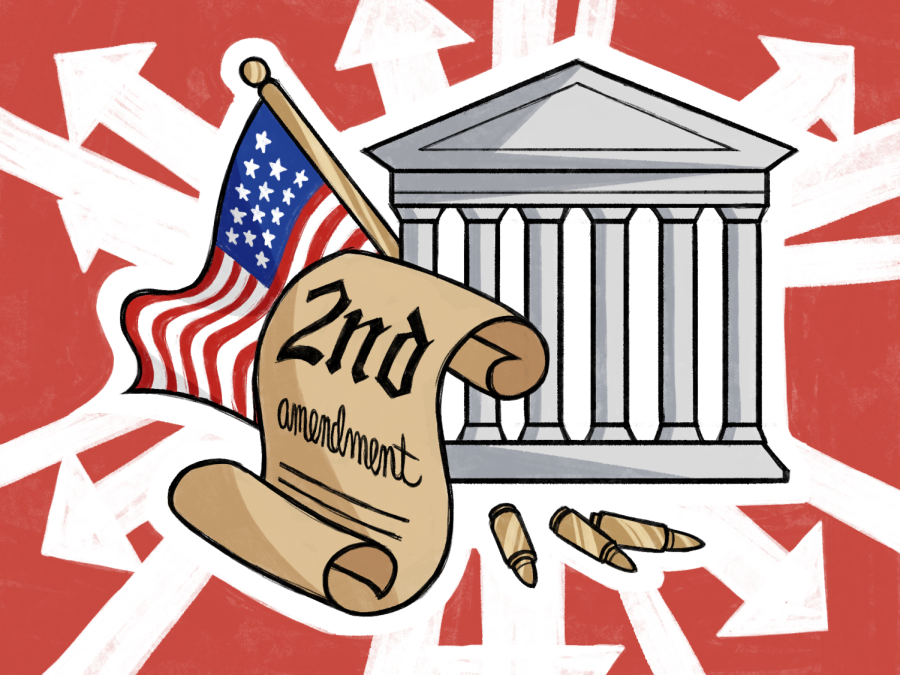FOCUS: Members of the SCHS community express their thoughts on current gun legislation and the Second Amendment
On June 23, 2022, the Supreme Court passed a ruling in the case of New York State Rifle & Pistol Association v. Bruen, striking down the state’s strict policies on carrying firearms in public areas. This ruling, contingent on a relaxed interpretation of the Second Amendment, was passed by a 6-3 majority and has made it easier for gun owners to carry firearms in public.
After the Supreme Court determined New York’s concealed carry permitting law as unconstitutional, numerous states with heavy firearm restrictions were left in a scramble to rewrite their laws. History teacher Christine Byerley believes the ruling undermines the legislative powers of individual states.
“I think that is kind of overstepping. I think states and local governments should be able to make those decisions,” Byerley said. “If we can have the states make decisions about other things that have a direct impact on their citizenry, then I think this is no different.”
The Supreme Court’s ruling in New York State Rifle & Pistol Association v. Bruen marks the monumental end of nearly three decades of inaction from the Supreme Court regarding gun legislation. According to the John Hopkins Center for Gun Violence Solutions, the outcome of the case was highly unexpected by those in the legal community. While making this decision, the Supreme Court considered the dissenting opinion, which revolved heavily around safety, whereas history and violations of the Second Amendment were focal to the affirming opinion.
An individual’s right to bear arms was first acknowledged in the case of District of Columbia v. Heller in 2008 with the establishment of a legal test for lower courts to determine how to rule on the Second Amendment. The test examines whether a ruling is historically upholding the Second Amendment and if the government has strong grounds for the ruling.
Today, the public opinion surrounding the Second Amendment has been fairly nuanced. Freshman Yujia Fei agrees with the nature of the amendment, however, believes a stronger educational program for gun owners should be implemented.
“First you should learn about the responsibilities of it (a gun), and you should learn how to use it before owning one,” said Fei. “Of course, there are going to be people out there that are not good people, but I think the majority should take classes, or just learn in general about the safety of it and when it’s appropriate to use.”
Although improving gun education will be foundational for general safety, many believe modifying the current process for obtaining guns will mitigate gun violence. Junior
Sireesha Dandamudi believes guns, especially without comprehensive background checks, are a danger to all.
“What we have seen with guns has been extremely dangerous and horrific. For
change, honestly, I would like to see an increasingly reduced use of guns and a general understanding that what we’ve become so desensitized to and that what has become so normalized in our society isn’t actually normal,” Dandamudi said. “So I just hope that the public sentiment resonates with a lot of people.”
With the Supreme Court’s ruling in the case of New York State Rifle & Pistol Association v. Bruen, the public eye has shifted toward the effects of gun usage in society. While many have their own reservations surrounding the Second Amendment and the expansion of gun rights in America, there is a great deal of support for modifying gun laws and implementing new regulations.
“There needs to be cooperation between federal government manufacturers, gun dealerships (and) gun licensing boards. There needs to be cooperation between all of us to balance freedom,” Byerley said. “It is not a simple thing, and Americans don’t always like to be told what to do.”


